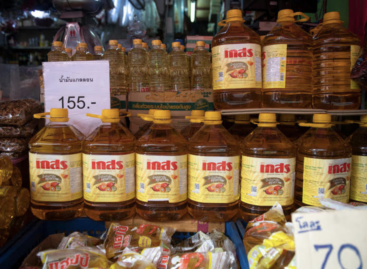A 3D-printed lamp made from orange peels
The Milan-based startup Krill Design is using Sicilian orange peels to print lamps that can be composted at the end of their lifespan.
The startup uses 3D technology to print the lamps, with each Ohmie lamp requiring the discarded peels of two or three oranges. The peels are sourced from a family-owned Sicilian food producer. The startup says that they decided to use orange peels because of the citrus’s ubiquity in Sicily.
The Ohmie lamp is 23-centimetres-tall and designed to reflect its origins with a patterned surface, orangey smell and vibrant colour. Whilst Krill believes to have developed the right formula, the material’s colour is still under improvement, they say.
After its lifecycle, the lamp can be added to the household’s organic waste, and hopefully turned either into compost or biofuel.
Springwise
Related news
3D-printed food appeared in Austria
Austria made history by making 3D-printed food products available in…
Read more >A dress made of orange peel will also be presented at the Grow exhibition
Clothes made from sustainable materials, such as orange peels, will…
Read more >Mayonnaise selfie on the burger – Video of the day
Smile, the picture is ready, and not long after, the…
Read more >Related news
Corporate leaders’ commitment to sustainability at record level
According to the latest data from the K&H Sustainability Index,…
Read more >FAO food price index rose slightly in June due to higher prices of meat, dairy products and vegetable oils
The Food and Agriculture Organization of the United Nations (FAO)…
Read more >What can cause the price of a wine to increase tenfold?
There are fewer of them worldwide than the number of…
Read more >






